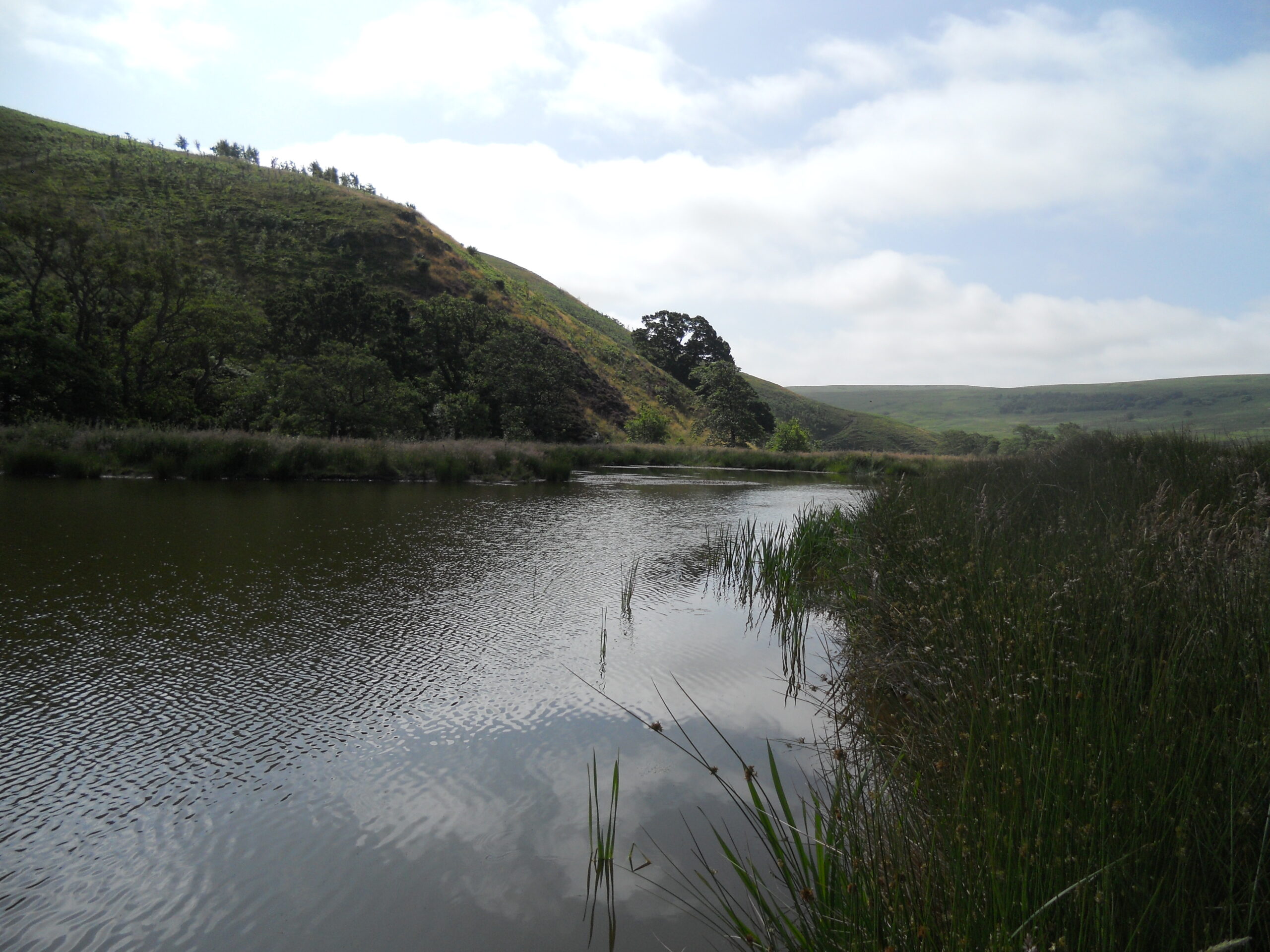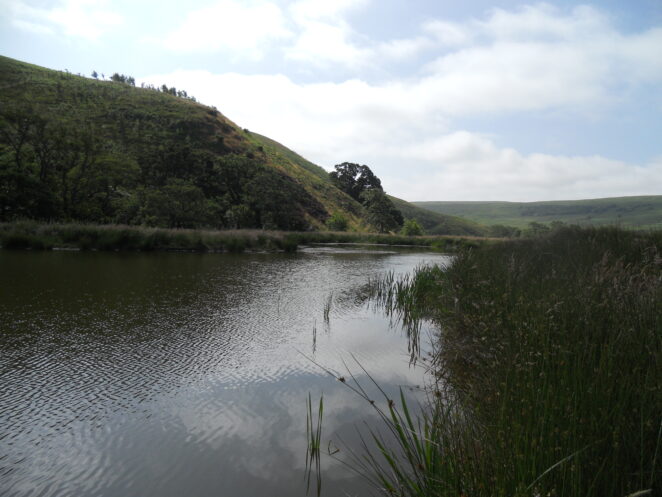Wildfire Water Resource Pond


Northumberland National Park and the surrounding area have many treasured landscapes and special qualities, particularly the rolling moors and grasslands of the Cheviot Hills, including internationally important peat bogs and moorlands.
The landscape we know and love is the product of many years of interaction between land and people. Therefore it is important that Cheviot Futures work with farmers and landowners to maintain sustainable and viable businesses, whilst also ensuring the environment is managed positively.
Although the future is uncertain, climate change predictions show that the Cheviot Hills area can expect warmer wetter winters, hotter drier summers, with an increase in the frequency of extreme weather events. The predicted changes have complex impacts on moorland wildfire; more summer droughts will result in more frequent wildfires. For instance in the UK in 2003 there were 1,000 wildfires a day in April in comparison to 35 per day in December, which was due to drought conditions. Warmer wetter winters could increase fuel accumulation if, as a consequence, there are fewer suitable days for controlled burning activities. This information indicates that the likelihood of increased numbers and intensity of wildfires are probable in the future. As such it is essential to try and manage the issue before it occurs, hence the building of a pond to act as a water resource, which can be used by high velocity pumps and helicopter buckets, for wildfire incidents in the Cheviot Hills.
Cheviot Futures works closely with Northumberland Fire and Rescue Service (NFRS). The Wildfire Water Resource was tested as part of a multi-agency wildfire simulation exercise which was attended by approximately 70 wildfire specialists from 11 countries. A series of innovative wildfire training events have been held in conjunction with NFRS and the retained fire fighters in Rothbury, Wooler and Bellingham. These events will provide practical training to those fire fighters who are most likely to be on the scene of a real wildfire event.
Case study
Economics. In considering this water resource feature Cheviot Futures was aware of the need to include the avoided costs of damage to the environment when considering investment.
In this situation spending money on wildfire suppression is more cost effective than the damage a fire would cause if the water resource was not in place. This is because there are no other water resources suitable for helicopter use close enough to make a significant difference to wildfires in this area. The water resource has been designed specifically to cover the extensive moorland and forestry within the surrounding seven kilometres by both the fire and rescue service and helicopter firefighting teams.
The Fire and Rescue Service (FRS) have completed a preliminary study of 14 fires and have identified two distinct size/duration categories of fire; small four hour fires typically less than 15 ha and large three day fires of over 350 ha. The FRS have worked out that on average the former will cost around £15,000 to fight, while the latter £210,000. This does not include the cost of helicopter, damage to property, livelihoods and other ecosystem services or injuries. A Peak District fire in 2006 took 31 days and a helicopter to suppress at a cost of around £1million and the Harbottle (Northumberland) fire of 2007 burnt over 1,000 ha and used two helicopters over two days.
2011 saw the hottest April on record, with only 21% of the average rainfall for the UK, this led to wildfires across the UK, in two days 255 fires broke out in 31 locations. These fires are reported to have caused £100,000 worth of damage to The National Trust for Scotland forest regeneration project in Torridon and Kintail. This is only a very small part of the economic cost of these fires but it shows the scale of the direct impact of wildfire on different landscapes.
The cost of helicopters to fight wildfires is the responsibility of the landowners at a cost of approximately £15 a minute. However, rapid helicopter response means smaller fires and less damage to land and businesses. In addition, a local water resource reduces flying time for a large area of land, making it a more efficient and effective means of firefighting. This in turn results in a better means of wildfire fighting in North Northumberland.
There are very few open water bodies in this area, meaning that measures to fight such events can be compromised from the start. To help address this, Cheviot Futures designed and delivered a wildfire fighting feature at Linhope that is strategically located.
The pond was designed by the Environment Agency and delivery of the feature was managed and procured by Cheviot Futures. It is 2.5m deep in the main area and roughly 100m x 70m in plan. The smaller half of the feature is separated by an underwater ridge to provide a wildlife refuge when it is drained down in operation. The pond is spring fed, and has maintained levels, even during very dry periods. In total it cost £25k to construct.
Policy context
The wildfire water resource has been part of a series of innovative wildfire projects that have been developed in partnership with Northumberland National Park Authority, Northumberland Fire and Rescue Service, land managers and the Northumberland Wildfire Group. The partnership has been at the forefront of wildfire projects and are keen to share the lessons learnt and project information with other interested parties. Other projects include the first Automatic Wildfire Detection System in the UK and a series of collaborative burning training for retained fire fighters to benefit them and local land managers.
Acknowledgements
Funding was made available from Northumberland Uplands New LEADER Local Action Group (funded by Rural Development Programme England, which is funded through European Union and DEFRA/Scottish Government).


(0) Comments
There is no content